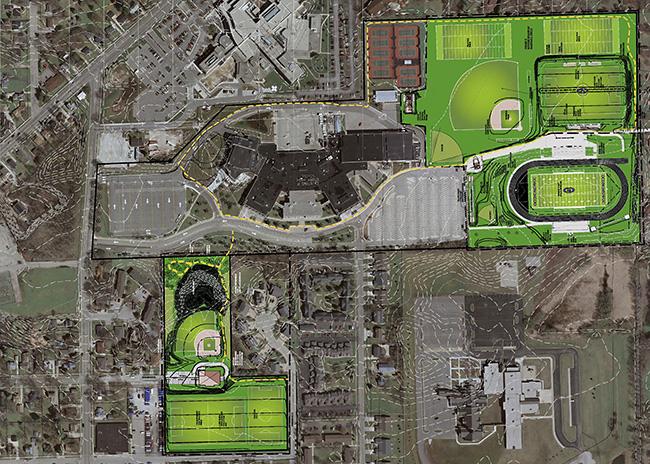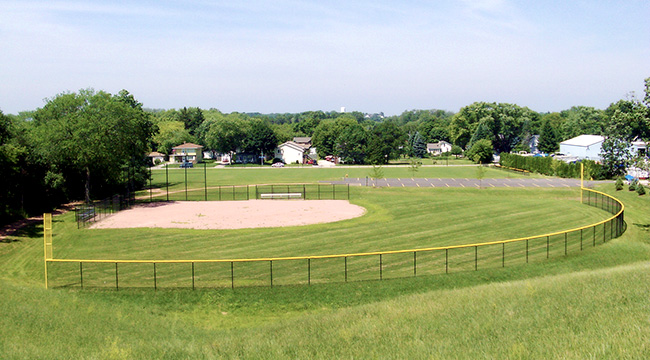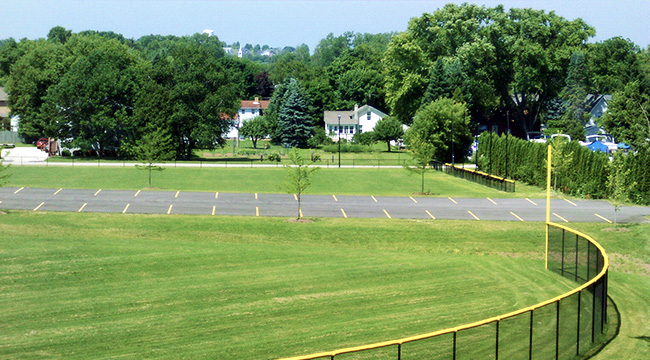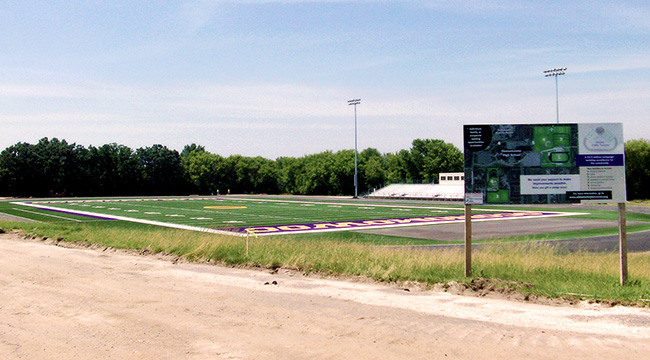From funding considerations to phased construction, the Oconomowoc High School and community athletic fields improvement project was both challenging and rewarding.
Here, we discuss some lessons learned from this complex improvement project.
1. Consider All Users
The Oconomowoc High School and community athletic fields improvement project was initiated by a coalition of the area school district and local sports booster club. It was very clear that both the students AND the surrounding community should benefit from the school’s upgraded athletic fields. Oconomowoc’s athletic director and the entire project team wanted the children in the surrounding community to have an open field to kick a soccer ball, play a pick-up baseball game, to practice their skills, and to help support the area parks’ co-rec youth and adult sports programs. This discussion helped the project team move forward in the fundraising efforts by understanding that the complex would be more than just for the high school, but a community benefit as well.
By considering all users and athletes, the project generated and solidified support for the athletic field improvements not only in the high school, but in the surrounding community. The public athletic fields soon became a rallying cry and a source of pride in the community, which contributed to an improved quality of life for all area residents, whether or not they are students or parents of students at the school.

2. Identify Funding Sources and Form a Booster Club(s)
In the case of Oconomowoc, the school was committed to the project and proved that commitment by pledging to contribute seed money to help get the athletic fields project off the ground. However, it was clear that the school didn’t have all of the necessary funds to complete the project. To address the financial shortfall, the school tapped numerous funding sources to pay for the project.
To supplement its own financial contributions to the project, the school applied for funding assistance from local grants, and hired an outside funding consultant to assist in a fund raising program. In addition, the school’s football, soccer and baseball programs each created separate booster groups that were made up of high school students, student athletes, their parents, faculty members, area business leaders and local community interests. The time and financial commitment of the booster clubs were instrumental in raising the funds necessary to keep the project moving forward to completion.

3. Research Best Management Practices
The project team did a lot of research in our quest to improve Oconomowoc’s athletic fields. We purposely visited other schools that had just recently completed similar projects in the surrounding districts to find out what was working for other schools and what they might have done differently. This effort was completed in order to narrow our search to the field surfaces, equipment, and amenities that would work best for our needs and fit within our unique project site and budget. Our athletic upgrades included resilient and long-lasting track surfaces, field activity areas that improve athlete and spectator safety, and artificial football field surfaces that help reduce ground impact and concussion injuries.

4. Relocate, Realign and/or Redesign Your Fields
In the case of Oconomowoc, a complete redesign made it possible to recycle the soils taken from the artificial turf construction on the football field and reuse them for grade fill and topsoil on the new varsity soccer stadium. Likewise, as the team considered the available space, it made sense for Oconomowoc to move their new junior varsity baseball field into the space that was formerly occupied by the soccer field. In addition, the ticket booth to the football stadium was relocated from a portable shelter in the parking lot, to a gateway building within the stadium site. This helps funnel fans out of the parking lot, which increases safety and enhances the stadium entry experience.
This redesign allowed Oconomowoc to use the existing concessions stand for all three sporting events, reduce the number of foul ball and homerun baseballs that resulted in dented siding and broken windows in neighboring homes, and provide a safer stadium entrance during large events.

5. Use Phased Construction
To maximize use while under construction, the majority of athletic field use and school athletics practice schedules were maintained throughout the construction process. First, the school constructed the new practice soccer fields and softball diamond on the lower-level athletic fields site. This enabled the athletic and physical education programs enough space for their practice and school activities while the soccer and football fields began construction in the spring. The majority of the major earth moving and construction activities were then completed in summer, while the school was out of session. The only program item that was lost, was the spring track season, where the team had to use a neighboring school’s facilities.
Conclusion
These five lessons learned are among numerous additional challenges that the project team encountered on this complex athletic fields improvement project. The Oconomowoc fields are now operational and are a source of great pride for the high school and the community.

.png?width=113&name=SEH_Logo_RGB%20(1).png)
